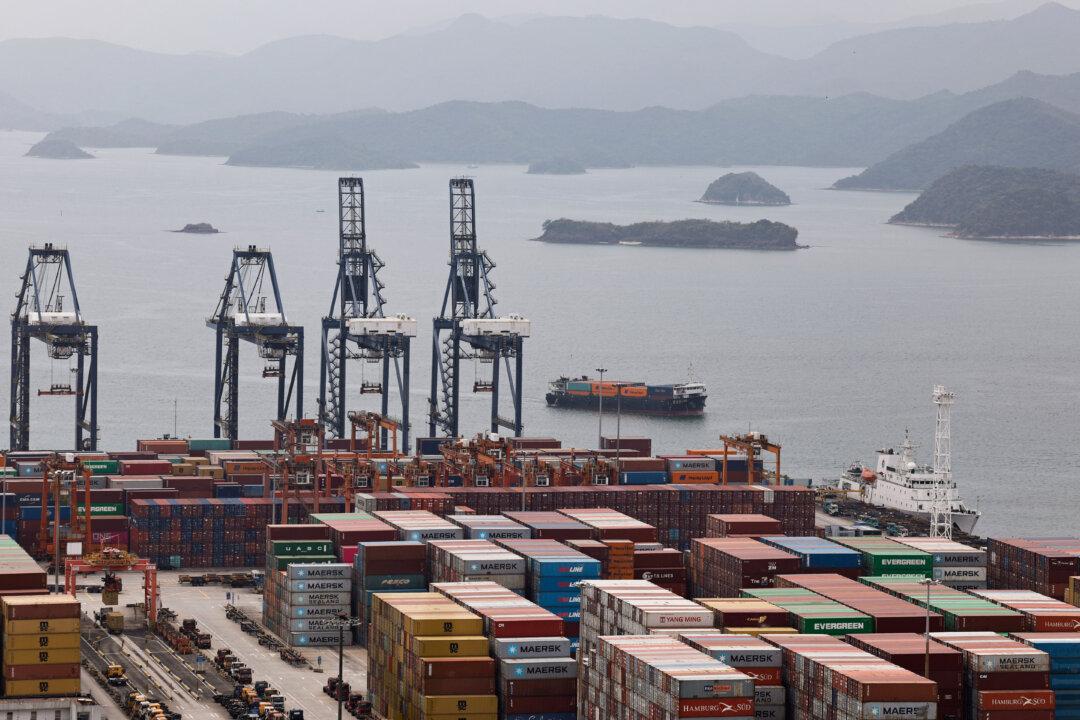U.S. President Donald Trump said the United States has reached a deal with China as both sides wrapped up their trade talks in London.
In exchange, the United States will allow Chinese students to attend its colleges and universities, which Trump said “has always been good with [him].”
“We are getting a total of 55 [percent] tariffs, China is getting 10 [percent],” the president wrote in all caps. “Relationship is excellent!”
The deal will be subject to final approval by Trump and Chinese leader Xi Jinping.
U.S. Commerce Secretary Howard Lutnick, who joined U.S. Treasury Secretary Scott Bessent and U.S. Trade Representative Jamieson Greer overseas, said U.S. tariff rates on Chinese goods will not change again.
“You can definitely say that,” Lutnick said when asked on CNBC’s “Money Movers” whether tariffs on Beijing will change again.
Negotiations in London will “stabilize” and balance the trade relationship between the United States and China, Bessent said.
“If China will course-correct by upholding its end of the initial trade agreement we outlined in Geneva ... then the rebalancing of the world’s two largest economies is possible by challenging the decades-old status quo,” Bessent said at a House Ways and Means Committee hearing on June 11.
U.S. stocks were little changed in premarket trading after the president’s social media announcement.
China is the world’s largest producer of rare earths, accounting for approximately 60 percent of the global supply and processing about 90 percent of it.
In recent years, U.S. officials have expressed concern about Beijing’s grip on the international supply chain for critical minerals.
In a move that went into effect on April 4, China had suspended nearly all exports of a diverse array of critical minerals and magnets, triggering supply chain problems.
Rare earth elements are crucial for industry and technological advancements, from manufacturing smartphones to building electric vehicles.
The Trump administration has pursued strategic alternatives to mitigate China’s stranglehold on critical minerals.
In addition to taking steps to bolster domestic production, the White House has established a security agreement with Ukraine to access its vast resources.
Trump and White House officials recently accused China of slow-rolling its compliance with the May 12 trade agreement reached in Geneva. This prompted a phone call between Trump and Xi, leading to the meetings with Chinese officials in London involving Bessent and others.
Earlier this year, the president imposed 20 percent levies on China as part of efforts to crack down on the flow of fentanyl entering the United States. At one point, the United States implemented a 145 percent tariff on most Chinese imports.
Trade Deal Deadline
A week after the April 2 reciprocal tariffs announcement, Trump authorized a 90-day pause to allow countries to negotiate with U.S. trade officials.So far, the United States has announced only a preliminary trade agreement with the UK. Administration officials have insisted for weeks that a flurry of trade deals will soon be unveiled.
“There are many, many deals coming,” he said. “And there were three that basically look like they’re done.”
White House press secretary Karoline Leavitt, meanwhile, also confirmed to reporters last week that the Office of the U.S. Trade Representative (USTR) had sent letters to countries, asking them to provide their best proposals in the coming days.
“I can confirm the merits and the content of the letter,“ Leavitt said. ”USTR sent this letter to all of our trading partners just to give them a friendly reminder that the deadline is coming up.”
Lutnick reiterated the administration’s position that there are “so many” new trade agreements coming.
“We’re going to get them done,” he said. “We’re in good shape with lots of countries, but good shape isn’t good enough for the United States of America.
“We just want to make sure they’re the best deal we possibly can make. We don’t want to rush, and Donald Trump is never going to accept the rush.”






